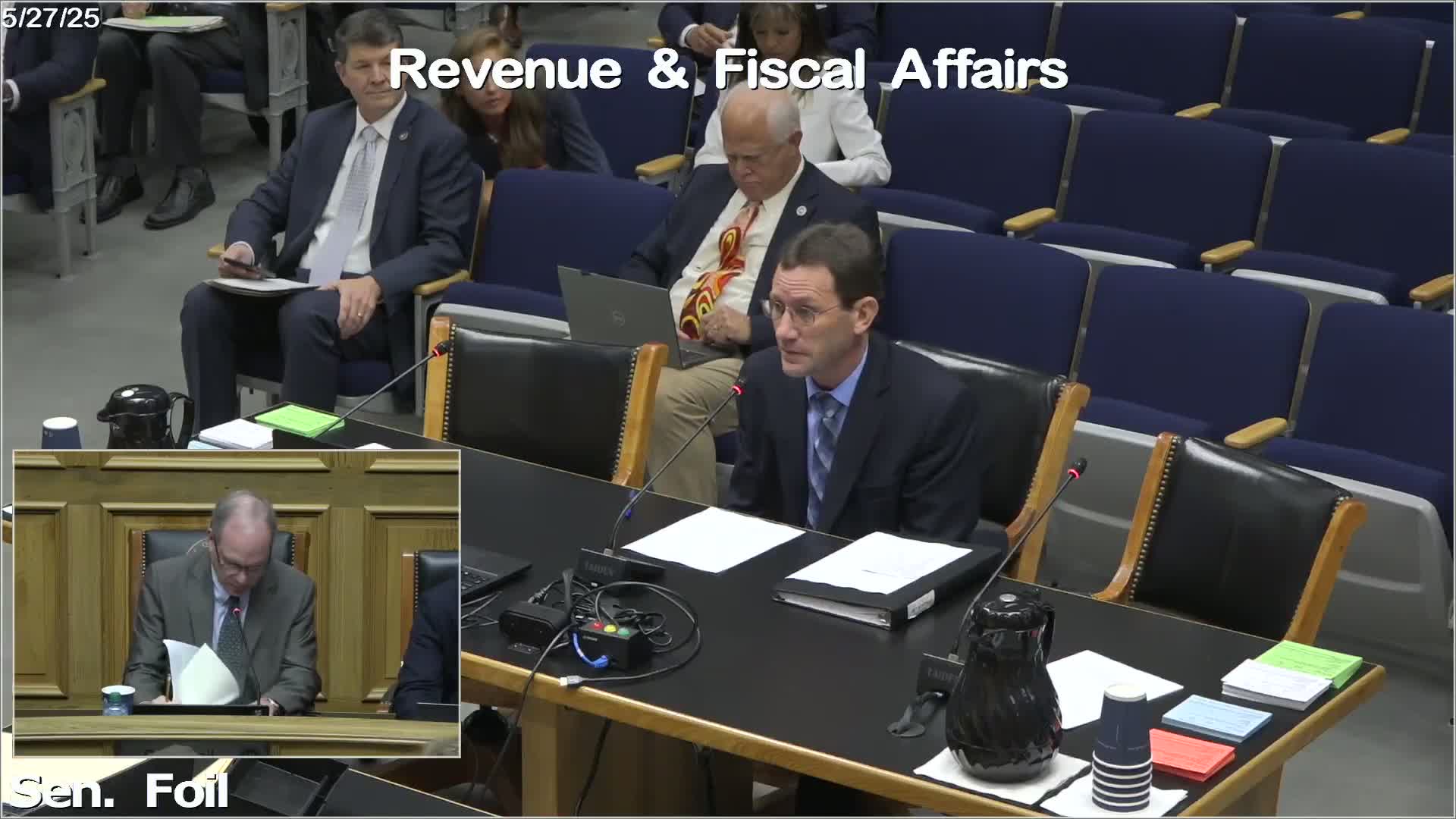Finance committee reviews House Bill 2 with $11.3B budget for state projects
May 27, 2025 | 2025 Legislature LA, Louisiana
This article was created by AI summarizing key points discussed. AI makes mistakes, so for full details and context, please refer to the video of the full meeting. Please report any errors so we can fix them. Report an error »

In a recent meeting of the Louisiana Senate Revenue and Fiscal Affairs Committee, officials gathered to discuss the state’s financial landscape and the intricacies of House Bill 2 (HB2), which outlines the capital outlay budget for the upcoming year. The atmosphere was charged with anticipation as committee members reviewed the significant increase in funding requests, which rose from 1,906 last year to 1,971 this year, signaling a growing demand for infrastructure projects across the state.
The original proposal for HB2 this year stood at nearly $11 billion, a notable increase from last year’s $10.3 billion. As discussions unfolded, it became clear that understanding cash flow needs for these projects was paramount. The committee emphasized the importance of prioritizing funding for projects that require immediate financial support, particularly those classified under Priority 1, which is designed to address cash flow needs for the upcoming year.
One of the key points raised was the challenge of managing the state’s capacity for new cash lines of credit, which has increased to $552 million due to inflation adjustments. However, this figure remains a tight constraint, especially when considering that the current bill is already $4.7 million under capacity for Priority 1 projects. This situation raises concerns about the feasibility of funding new initiatives without reallocating resources from existing projects.
As the committee delved deeper into the implications of the bill, it became evident that the historical context of funding allocations plays a crucial role in shaping current decisions. Over the past several years, the capital outlay bill has ballooned from approximately $3 billion to over $11 billion, reflecting both the growing needs of the state and the complexities of managing such a substantial budget.
The discussions also highlighted the risks associated with funding local projects, particularly those that may not materialize. Committee members expressed caution about tying up funds in projects that could take years to complete, emphasizing the need for a more strategic approach to project prioritization and funding allocation.
Looking ahead, the committee acknowledged the necessity of reassessing the overall capacity of the bill and focusing on realistic funding priorities. With the potential for additional projects to be added, the challenge remains to ensure that available funds are utilized effectively to meet the pressing infrastructure needs of Louisiana.
As the meeting concluded, the sense of urgency was palpable. The decisions made in the coming months will not only shape the state’s financial future but also impact the lives of countless residents who rely on these critical infrastructure projects. The committee's commitment to understanding cash flow needs and prioritizing funding will be essential as they navigate the complexities of the upcoming fiscal year.
The original proposal for HB2 this year stood at nearly $11 billion, a notable increase from last year’s $10.3 billion. As discussions unfolded, it became clear that understanding cash flow needs for these projects was paramount. The committee emphasized the importance of prioritizing funding for projects that require immediate financial support, particularly those classified under Priority 1, which is designed to address cash flow needs for the upcoming year.
One of the key points raised was the challenge of managing the state’s capacity for new cash lines of credit, which has increased to $552 million due to inflation adjustments. However, this figure remains a tight constraint, especially when considering that the current bill is already $4.7 million under capacity for Priority 1 projects. This situation raises concerns about the feasibility of funding new initiatives without reallocating resources from existing projects.
As the committee delved deeper into the implications of the bill, it became evident that the historical context of funding allocations plays a crucial role in shaping current decisions. Over the past several years, the capital outlay bill has ballooned from approximately $3 billion to over $11 billion, reflecting both the growing needs of the state and the complexities of managing such a substantial budget.
The discussions also highlighted the risks associated with funding local projects, particularly those that may not materialize. Committee members expressed caution about tying up funds in projects that could take years to complete, emphasizing the need for a more strategic approach to project prioritization and funding allocation.
Looking ahead, the committee acknowledged the necessity of reassessing the overall capacity of the bill and focusing on realistic funding priorities. With the potential for additional projects to be added, the challenge remains to ensure that available funds are utilized effectively to meet the pressing infrastructure needs of Louisiana.
As the meeting concluded, the sense of urgency was palpable. The decisions made in the coming months will not only shape the state’s financial future but also impact the lives of countless residents who rely on these critical infrastructure projects. The committee's commitment to understanding cash flow needs and prioritizing funding will be essential as they navigate the complexities of the upcoming fiscal year.
View full meeting
This article is based on a recent meeting—watch the full video and explore the complete transcript for deeper insights into the discussion.
View full meeting
